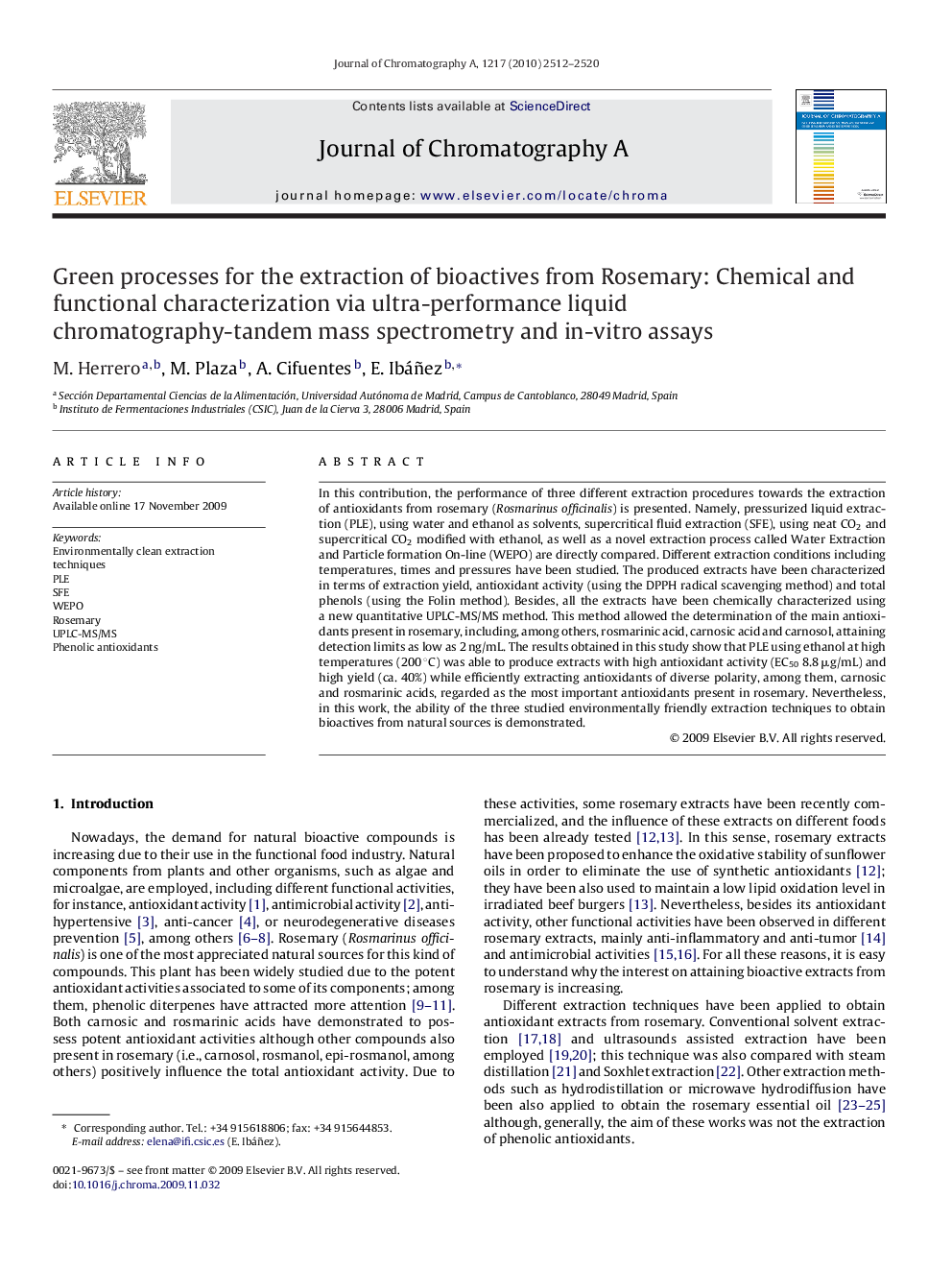| Article ID | Journal | Published Year | Pages | File Type |
|---|---|---|---|---|
| 1209744 | Journal of Chromatography A | 2010 | 9 Pages |
In this contribution, the performance of three different extraction procedures towards the extraction of antioxidants from rosemary (Rosmarinus officinalis) is presented. Namely, pressurized liquid extraction (PLE), using water and ethanol as solvents, supercritical fluid extraction (SFE), using neat CO2 and supercritical CO2 modified with ethanol, as well as a novel extraction process called Water Extraction and Particle formation On-line (WEPO) are directly compared. Different extraction conditions including temperatures, times and pressures have been studied. The produced extracts have been characterized in terms of extraction yield, antioxidant activity (using the DPPH radical scavenging method) and total phenols (using the Folin method). Besides, all the extracts have been chemically characterized using a new quantitative UPLC-MS/MS method. This method allowed the determination of the main antioxidants present in rosemary, including, among others, rosmarinic acid, carnosic acid and carnosol, attaining detection limits as low as 2 ng/mL. The results obtained in this study show that PLE using ethanol at high temperatures (200 °C) was able to produce extracts with high antioxidant activity (EC50 8.8 μg/mL) and high yield (ca. 40%) while efficiently extracting antioxidants of diverse polarity, among them, carnosic and rosmarinic acids, regarded as the most important antioxidants present in rosemary. Nevertheless, in this work, the ability of the three studied environmentally friendly extraction techniques to obtain bioactives from natural sources is demonstrated.
